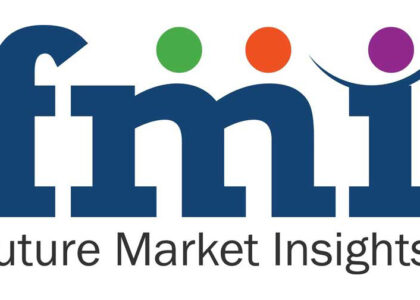The sustainable aviation fuel market is anticipated to expand its roots at a strong CAGR of 60% between 2023 and 2033. The market is expected to have a market share of US$ 61.92 billion by 2033 while it is projected to be valued at US$ 563.2 million in 2023
- The slowly decreasing availability of fossil fuels and increasing air pollution with rising air traffic propels the market growth. As governments try to reduce carbon waste. Furthermore, the advanced sources of sustainable aviation fuel like waste and scrap are making it highly favorable.
- The long range of applications, sources, and fuel types available lets the market stretch its boundaries. While the market witnesses an increase in SAF plants across the globe. This is followed by mergers between the local governments and sustainability aviation companies.
- The restoration of the airline industry coupled with the proliferating commercial flights has pushed aviation companies to adopt the latest sustainable solutions. These include fuel transition, new air routes, etc.
- The higher energy content, enhanced oxygen supply, and lower aviation emissions are some other factors that let SAF win over ordinary jet fuel. Alongside this, the adoption of zero-carbon hydrogen fuel cell technology is also adding value to the market growth.
- The fluctuations in the prices of fossil fuel with the ongoing Russia-Ukraine conflict and rising inflation are other factors that lead aviation companies to look for an alternative. This gives space to the SAF market to expand its roots.
- Rising per capita income and increased living standards are also driving commercial flight demand. The companies use alternative fuels to limit the cost of flying.
Request a sample @ https://www.futuremarketinsights.com/reports/sample/rep-gb-14269
Key Points
- The North American region is one of the crucial spaces for a sustainable aviation fuel market. As it has many airports with a high density of international and national flights. Lately, the Biden administration has advanced the prospects of sustainable fuels in American aviation with a target of reducing aviation emissions by 20% by 2030.
- Europe with its restored tourism industry and high tourist footfall has also invested in the sustainable aviation fuel industry. The European Parliament has passed a mandate named ‘ReFuelEU Aviation’ in 2022.
- Based on fuel type, the biofuel segment leads over other segments as it is considered highly safe, reliable, and low carbon. The fuel comes from forestry and agricultural waste.
- Based on biofuel blending capacity, the 30% to 50% segment leads as it is more acceptable across the regions.
Competitive Landscape
The key vendors work on fastening their manufacturing process while also expanding their plants. Furthermore, the mergers between the government and SAF producers are transforming the market strategies. Key competitors and also merge, acquire, and partner with other companies to increase their supply chain, and distribution channel.
Ask an Analyst@ https://www.futuremarketinsights.com/ask-question/rep-gb-14269
Key Players:
- Preem (Sweden)
- OMV (Austria)
- Atmosfair (Germany),
- Wastefuel (United States)
- Prometheus Fuels
- Red Rocks Biofuel (United States)
- Northwest Advanced Biofuels
Recent Market Developments
- Swedish brand, Preem has selected Haldor Topsoe’s Hydroflex for its renewable fuel plant. The plant is expected to hold the potential of saving 2.5 million tons of Co2. The plant also holds a capacity of 16,000 barrels-per-day unit.
- German startup, Atmosfair has introduced the world’s first clean jet fuel plant with carbon-neutral aircraft technology.
Sustainable Aviation Fuel Market: Segmentation
By Platform:
- Commercial Aviation
- Military Aviation
- Business & General Aviation
- Unmanned Aerial Vehicle
By Biofuel Blending Capacity:
- Below 30%
- 30% to 50%
- Above 50%
By Type:
- Total Stations
- Global Navigation Satellite Systems (GNSS)
- Laser Scanners
- Sensors
- Others
By Biofuel Manufacturing Technology:
- Hydroprocessed Fatty Acid Esters and Fatty Acids – Synthetic Paraffinic Kerosene (HEFA-
- Fischer Tropsch Synthetic Paraffinic Kerosene (FT-SPK)
- Synthetic Iso-paraffin from Fermented Hydroprocessed Sugar (HFS-SIP)
- Alcohol to Jet SPK (ATJ-SPK)
- Catalytic Hydrothermolysis Jet (CHJ)
By Fuel Type:
- Biofuel
- Hydrogen Fuel
- Power to Liquid Fuel
- Gas-to-Liquid
Ask For Customization@ https://www.futuremarketinsights.com/customization-available/rep-gb-14269
About Future Market Insights, Inc.
Future Market Insights, Inc. (ESOMAR certified, Stevie Award – recipient market research organization and a member of Greater New York Chamber of Commerce) provides in-depth insights into governing factors elevating the demand in the market. It discloses opportunities that will favor the market growth in various segments on the basis of Source, Application, Sales Channel and End Use over the next 10-years.
Contact Us:
Future Market Insights Inc.
Christiana Corporate, 200 Continental Drive,
Suite 401, Newark, Delaware – 19713, USA
T: +1-845-579-5705
LinkedIn| Twitter| Blogs | YouTube
For Sales Enquiries: sales@futuremarketinsights.com


